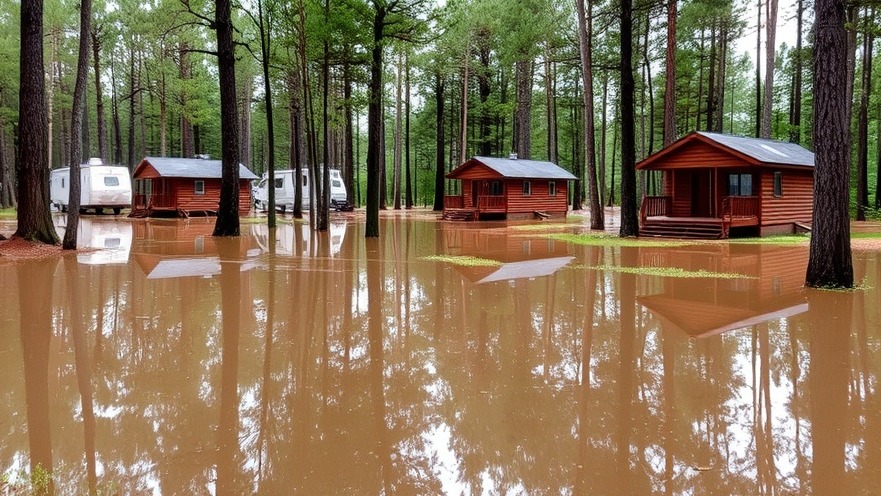
Understanding the Flood Risk for Summer Camps Along the Guadalupe River
The recent tragedy along the Guadalupe River, where a flash flood swept away children at a summer camp, has ignited a spotlight on the alarming fact that many camps have been built in flood-prone areas. Following the devastating events of July 4, this incident is prompting serious discussions about the regulations surrounding construction in flood zones and the safety of children's summer activities.
Decades of Development Ignoring Flood Maps
Many of the more than a dozen summer camps situated along the Guadalupe River were constructed years ago, long before modern flood modeling and mapping were widely implemented. As the environmental conditions shift due to climate change, the communities and the authorities have struggled to keep pace, resulting in outdated flood maps that often underestimate risk levels.
High Stakes: The Safety of Our Children
While all-girls’ Camp Mystic is at the heart of this tragedy, it represents a broader issue. The fact that 13 summer camps are placed within flood-prone areas raises serious questions about accountability and safety measures established for children's wellbeing. Sarah Pralle, an associate professor at Syracuse University, highlights the critical nature of the problem by stating, "You’re not just putting yourself at risk; you’re putting these children at risk who you’re supposed to be looking out for."
The Identification of Hazardous Structures
According to a Texas Tribune analysis, several camps, such as Camp Capers and Camp Waldemar, report over a third of their structures occupying the risk-laden 100-year floodplain. Unfortunately, these structures, including cabins and dining halls, are not just buildings; they serve as places where memories are made, making their vulnerability all the more poignant.
Regulatory Gaps and Local Challenges
One of the significant challenges identified is the limited regulatory power counties have concerning construction in floodplains. Even as the evidence mounts regarding an increasing frequency of severe weather events attributable to climate change, governance structures are slow to adapt. The testimony from camp owners and directors echoes a growing consensus: action needs to be taken to protect not just the camps but the children who attend them.
Modernizing Flood Risk Assessments
The Federal Emergency Management Agency's (FEMA) flood maps, traditionally relied upon to guide development, are becoming obsolete due to a rapidly changing climate. With increased rainfall and flooding predicted, these maps require an overhaul. Currently, the modeling used to determine flood zones hasn’t kept up with how storm patterns are evolving, leaving many vulnerable.
Lessons Learned from Recent Events
The outcry following the flood tragedy could serve as a catalyst for change in floodplain management. Stakeholders from active camps need to engage in conversations about best practices for infrastructure and safety. Holistic approaches to camp design and regulation could provide a framework for safeguarding structures in flood-prone areas.
The Importance of Community Awareness and Education
As communities grapple with the repercussions of such disasters, education and awareness may pave the way for proactive solutions. Local governments can strengthen disaster response plans and foster a culture of safety among campers and staff. Communities must come together to prioritize safety and collectively advocate for clearer regulations to prevent such tragedies from occurring in the future.
The recent flood has indeed revealed serious challenges regarding summer camp safety. By prioritizing better regulations and community engagement, it is possible to ensure the safety of future generations enjoying their time in nature.
 Add Element
Add Element  Add Row
Add Row 



Write A Comment